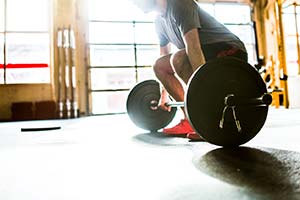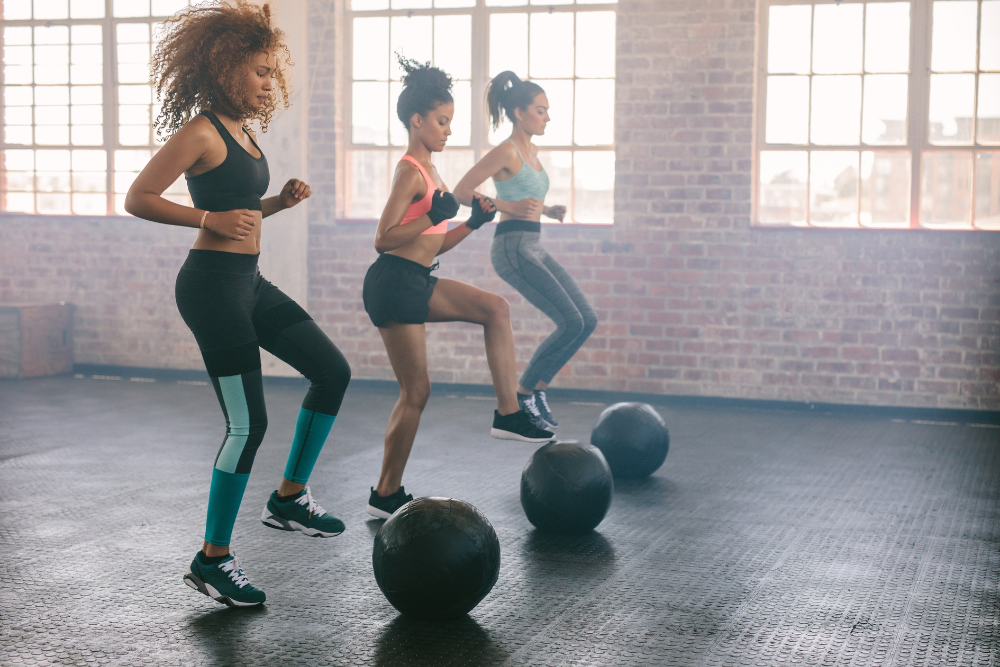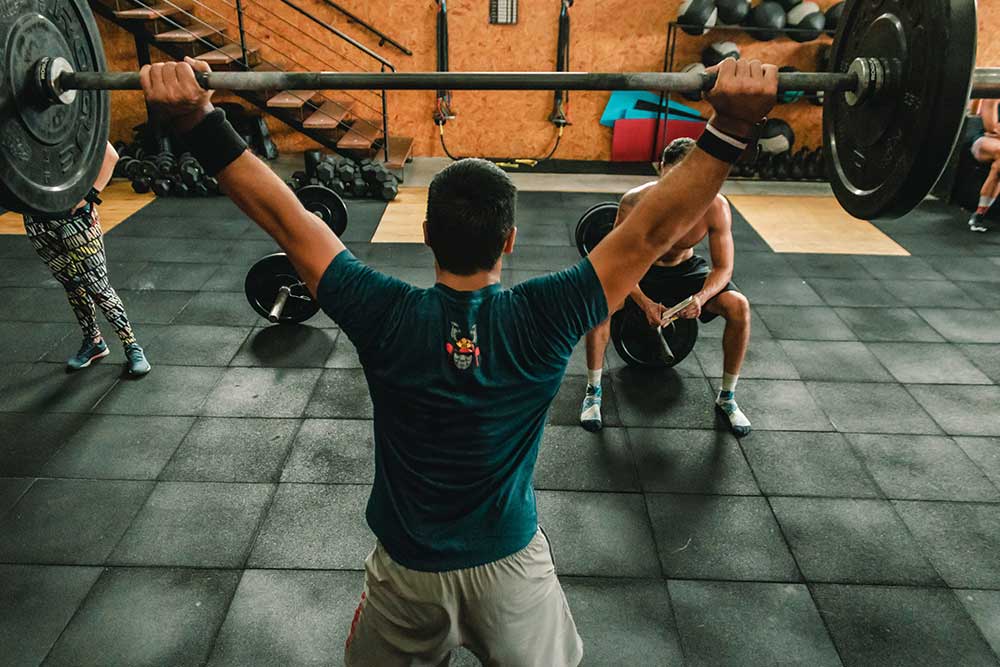Endurance Athletes: Why Women Win In The Long Run

Hunter Bennett
It is commonly thought that when it comes to athletic endeavors, men have a bit of genetic advantage. Due to their enhanced capacity to build more muscle mass and develop greater amounts of strength, that they somehow have athletic superiority over female athletes.
But is this really the case when it comes to all aspects of athletic performance?
Because there is reason to believe that it is not.
Where do men have an advantage in athletics?
Now, don’t get me wrong, due to their increased capacity to develop strength and size, men certainly do have an advantage in certain areas of athletic performance – namely in those that involve the rapid expression of strength and power.
Think of throwing-related events, such as the javelin and the shot put. Additionally, men have an advantage in short track events such as the 100 and 200-meter sprints, the long jump, and the high jump.
These athletic tasks are predominately power based. This means men are heavily assisted by the greater levels of muscle mass that they are capable of developing.
In this manner, women are indeed at a disadvantage.
But this is quite limited to these types of events – as I outline in more detail below.
Where do women have an advantage in athletics?
On the flip side, there has always been evidence to suggest that female athletes running long distance are more comparable to men in terms of their aerobic endurance performance.
If we were to take an in-depth look at marathon performance of both elite men and women, we would quickly see that the world record times are much closer together than that of any power based sport.
Moreover, when it comes to ultra long duration swimming events (such as swimming across the English channel), women have long reigned supreme.
But for the longest time, this hasn’t quite held true for running based endurance events.
In fact, up until this decade, long distance running was still considered to be the sport of male athletes.
Note: I did just say, ‘this decade’.
Related Article: Strength Training Program for Endurance Runners
Women Are Closing In
You see, over the last few years, we have started to see a bit of a shift towards female athletes.
Ultra-endurance events increasing in popularity among female athletes. Because of this, we have a seen surge in the levels of performance that female athletes are delivering on a regular basis.
In the incredibly brutal ‘Ultra Trail du Mont Blanc’ – a 106-mile long course that winds its way through the French, Swiss, and Italian Alps, and climbs more than 33,000 feet – we have recently seen female athlete, Rory Bosia, finish an unheard of seventh place.
She crossed the finish line in an absurd time of 22 hours 37 minutes.
Only last summer we had the pleasure of witnessing Lael Wilcox became the first woman to win the ‘Trans Am’, an amazing 4300-mile long cycling event that makes its way from Oregon all the way to Virginia.
Hell, just last year we saw elite obstacle racer Amelia Boone finish in second place overall at the World’s Toughest Mudder (a casual 24-hour long race), during which she covered an incredible total of 90 miles.
Amazingly, she happened to finish ten miles in front of the person who finished in third place – who, I should note, also happened to be a woman.
And I can assure you that as time moves forward, this trend will only continue.
Differences in muscle fatigue between males and females
There is some interesting research demonstrating that, when it comes to the expression of both muscular strength and muscular endurance, there are some slight variations between men and women that need consideration (Miller, 1993; . Fujisawa, 2017).
Now, as you can imagine, these physiological differences between men and women are actually pretty important.
As I have already alluded to, men have a greater capacity to build muscle and tend to have a better capacity for expressing absolute strength.
However, their ability to continually express a given percentage of their maximal strength is quite inferior when compared to females.
Let’s use the barbell back squat exercise as a simple example. An average male might be able to perform a between 10 and 12 repetitions at 80% of their pre-determined one repetition maximum (1RM). An average female will be able to get between 15 and 18 repetitions.
In short, their capacity to tolerate and manage muscular fatigue appears to be superior. This might explain why we some differences in distance performance between the two genders.
Why are men faster over shorter distances?
Pretty simply, men are quicker over shorter distances because their capacity to develop strength and power is greater. Short sprints are almost entirely reliant on one’s ability to generate force as quickly as possible. Fatigue management barely plays a role (Perez-Gomez, 2008).
As distance begin to increase, the importance of force production declines, and the ability to manage fatigue becomes more important.
I should note that this doesn’t mean that force production isn’t important. Over medium distances such as 3000 and 5000 meters, it is integral – but fatigue management plays an increasingly essential role.
Why are women faster over long distances?
As running distance becomes longer and longer (for example, as we transition into ultramarathon type events), the maximal amount force that an individual can produce starts to become less and less important.
Instead, the ability to repeatedly produce a given force under fatigue is what determines success – and this is where women start to shine.
Their ability to manage fatigue suggests that they have a slight ‘metabolic superiority’ over males.
Subsequently, their ability to constantly produce energy and continue moving without seeing a decline in force production is what allows them to perform better over longer distances (Hunter, 2016).
When do women start to get faster?
Now, this is where things get a little bit murky. At this point in time, male athletes are still performing better than female athletes in almost all elite endurance events. This is irrespective of the fact that females may actually be better suited to those events.
While I cannot say for certain, I do believe that this may come down to the fact that men have been training for these sorts of events for centuries. They are only now becoming more popular among female athletes.
With this in mind, with increasing popularity will come increasing rates of participation.
Over time this will create much more demanding competition. The quality of training will increase, as will the quality of competitors – all of which will eventually contribute to records being smashed, and women potentially overtaking men.
I cannot wait to see the progress.
Will women start to surpass men in distances?
So I guess in answer to this question is potentially.
We are already seeing elite female runners gaining on elite male runners in terms of absolute endurance performance – so it only makes sense to think that this trend will continue as the quality of female running increases.
It will start with ultra-endurance events, and may eventually even end up trickling down towards middle distance events as well.
While only time will tell in truth, there is definitely enough early evidence to suggest that eventually, they will come very close…
Does giving childbirth give women a competitive advantage?
Does childbirth improve athletic ability?
This in itself is quite an interesting question, and one that many would say is nothing more than wishful thinking.
But what if it is a bit more than that?
During pregnancy, the body undergoes a number of key physical changes, some of which have even been hypothesized to have a positive impact on endurance performance.
First and foremost, you will see the ribcage expand. It has been said that this expansion can result in advanced breathing mechanics well beyond the postnatal period, facilitating the movement of air in and out of the lungs, and improving performance.
Additionally, throughout the entire pregnancy period, the heart is almost entirely remodeled.
In this manner, the total capacity of its chamber drastically increases. It allows the heart to hold a significantly greater larger volume of blood. This, in turn, improves the capacity of the heart to pump blood around the body. The efficiency that oxygen is supplied to the muscle tissue is enhanced and ultimately improves performance even further.
Pretty amazing stuff really.
But that’s not all…
Related Article: The Best Workout Combination: Endurance Training and HIIT
Do hormones after giving childbirth spike athleticism in women?
In conjunction with these important physical changes, we also see some interesting hormonal changes that are worthy of mention.
You see after pregnancy estrogen levels increase drastically beyond normal levels. The increase in estrogen also causes subsequent increases in the secretion of the hormone serotonin.
This is important, because these two hormones collectively increase water retention, minimize the onset of fatigue, and improve both mood and general wellbeing. The combination of these ultimately has the capacity to cause sustained improvements in endurance performance.
Where is the research heading?
Now, with all this in mind, it is important to take a big step back and realize that while this information does indeed create a very interesting story, there is still much that remains very unclear.
While we know that these physical and hormonal changes do occur during pregnancy, we do not know the degree in which they impact performance parameters (there is obviously a whole lot of speculation).
Although this is an area of research that is much needed, it is also very challenging to undertake. This is the reason that so much still remains unclear and undetermined.
We are also waiting on high-quality research providing further insight into the exact reasons as to why women might be better suited to long distance endurance events than their male counterparts.
Although the research around muscle fatigue is strong, I am certain that there are a number of other potential factors that contribute to this phenomenon – many of which have not been explored in any depth at all.
So while the early research into this interesting area is indeed exciting, more research is needed to really determine why and how female athletes are designed to dominate high-level endurance events.
Take Home Message
Over the last few years, we have seen some rather amazing feats of endurance by elite female athletes. This trend is likely to continue as the quality of the sport improves.
There is early evidence to suggest that female athletes manage muscle fatigue much better than males, making them better suited to longer duration events.
And when we combine this with some key changes that occur during pregnancy, well, you have a recipe for success!
References
Miller, Andrea Elizabeth Jane, et al. “Gender differences in strength and muscle fiber characteristics.” European journal of applied physiology and occupational physiology 66.3 (1993): 254-262.
Fujisawa, Chiharu, et al. “Influence of gender on muscle fatigue during dynamic knee contractions.” Physical therapy research 20.1 (2017): 1-8.
Perez-Gomez, Jorge, et al. “Role of muscle mass on sprint performance: gender differences?.” European journal of applied physiology 102.6 (2008): 685-694.
Hunter, Sandra K. “The relevance of sex differences in performance fatigability.” Medicine and science in sports and exercise 48.11 (2016): 2247.
You Might Like:
















